Your cart is currently empty!
Tag: Visualization
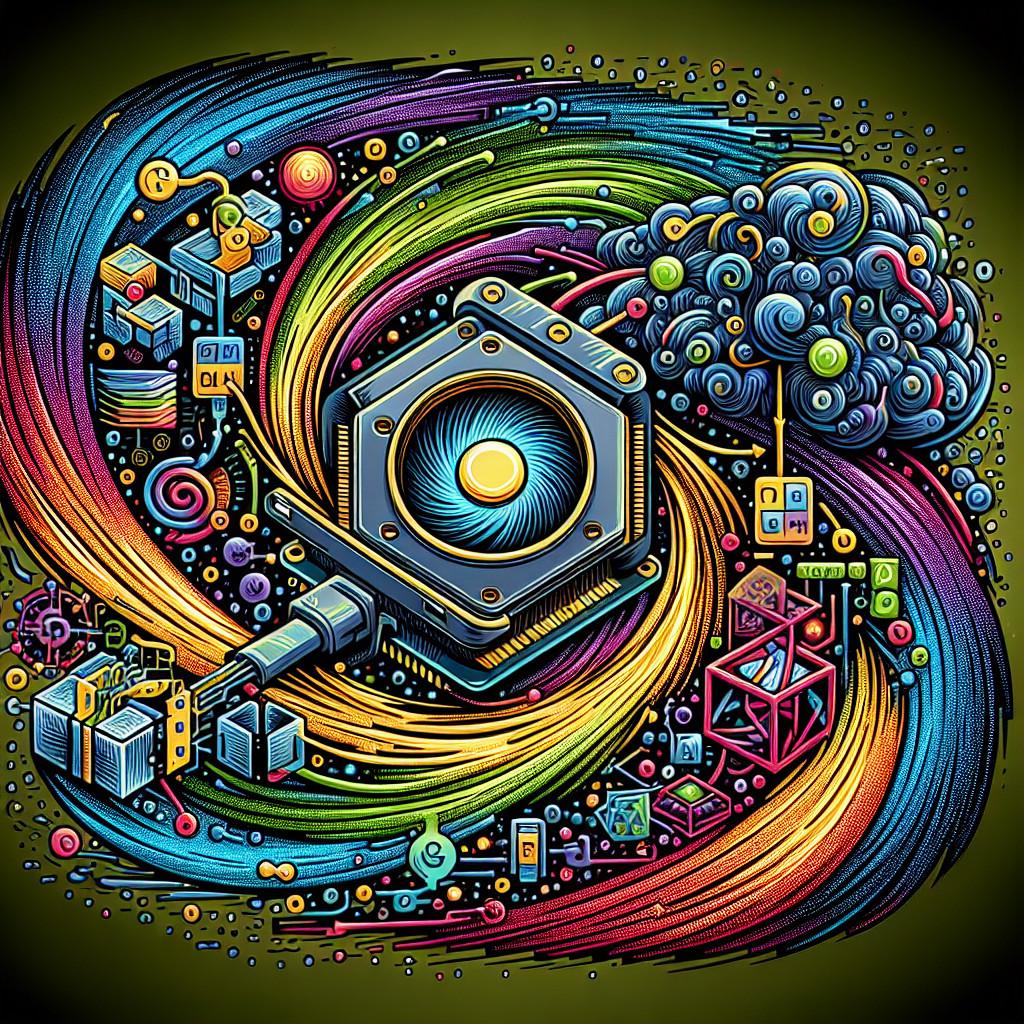
Unlocking the Potential of GPUs in AI and Machine Learning
Artificial intelligence (AI) and machine learning (ML) have become increasingly important in today’s digital world. These technologies have the potential to revolutionize industries, automate processes, and enhance decision-making. However, to fully unlock the potential of AI and ML, powerful computing resources are essential.Graphics processing units (GPUs) have emerged as a key technology for accelerating AI and ML workflows. Traditionally used for rendering graphics in video games and other visual applications, GPUs have proven to be highly effective in performing the complex calculations required for AI and ML tasks.
One of the key advantages of using GPUs in AI and ML is their parallel processing capabilities. Unlike central processing units (CPUs), which focus on executing one task at a time, GPUs are designed to handle multiple tasks simultaneously. This makes GPUs ideal for running the large-scale computations required for training complex neural networks and other AI algorithms.
In addition to their parallel processing capabilities, GPUs also offer high performance and energy efficiency. This allows organizations to train AI models faster and at a lower cost compared to traditional CPU-based systems. As a result, businesses can accelerate their AI and ML initiatives, leading to quicker insights and improved decision-making.
Furthermore, GPUs are highly scalable, making them suitable for handling large datasets and complex AI models. By leveraging multiple GPUs in a distributed computing environment, organizations can significantly increase the speed and efficiency of their AI and ML workflows. This scalability also allows businesses to future-proof their AI infrastructure and adapt to changing computational requirements.
To fully harness the power of GPUs in AI and ML, organizations should invest in the right hardware and software tools. This includes selecting GPUs with sufficient processing power, memory, and bandwidth to handle the demands of AI workloads. Additionally, businesses should consider using optimized frameworks and libraries that are designed to leverage the parallel processing capabilities of GPUs.
In conclusion, GPUs have the potential to unlock new possibilities in AI and ML by providing organizations with the computational power needed to train complex models and process large datasets. By harnessing the parallel processing capabilities, performance, and scalability of GPUs, businesses can accelerate their AI initiatives and drive innovation in their respective industries. As technology continues to evolve, GPUs will play a crucial role in shaping the future of AI and ML.
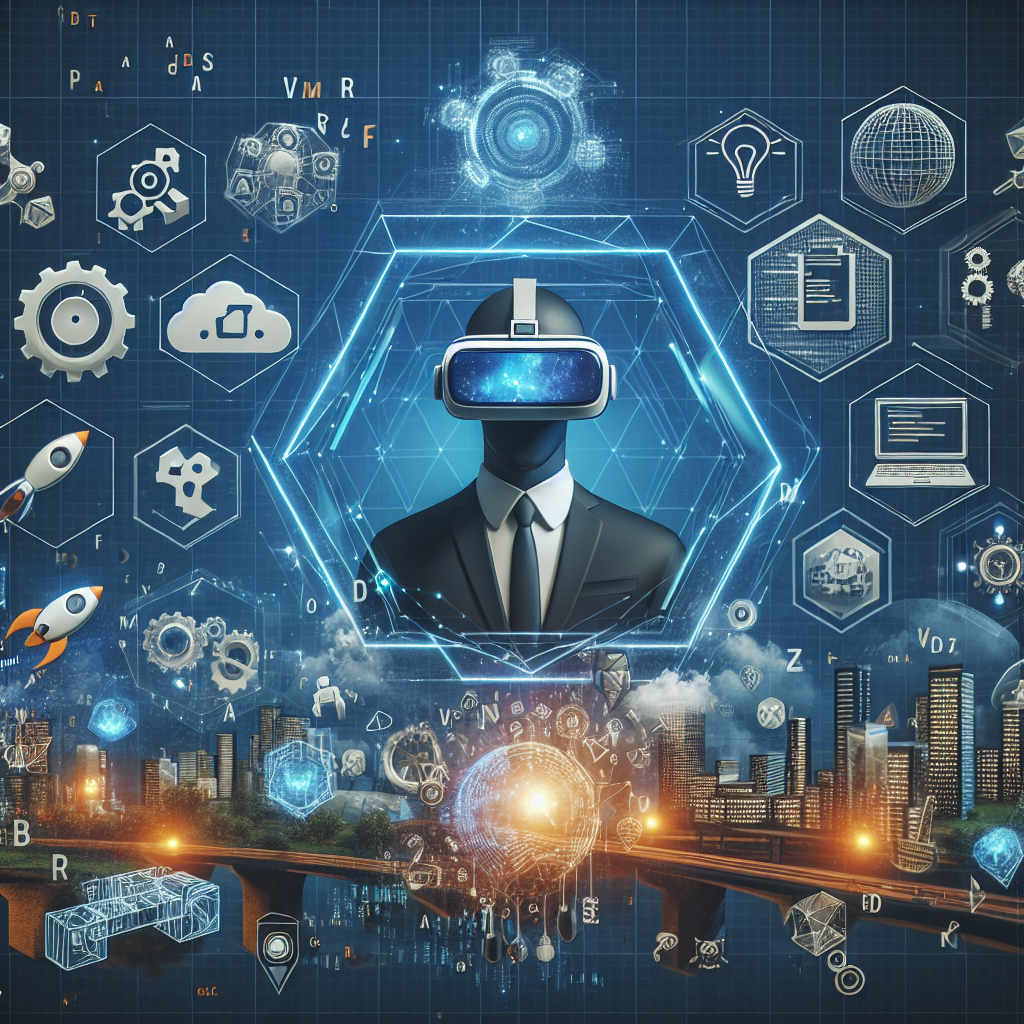
The Power of NVIDIA in Augmented Reality Development
Augmented reality (AR) has become a rapidly growing field with numerous applications across various industries. From gaming to education to healthcare, AR technology is revolutionizing the way we interact with the world around us. One of the key players in the development of AR technology is NVIDIA, a leading company in computer graphics and artificial intelligence.NVIDIA is known for its powerful graphics processing units (GPUs) that are used in a wide range of applications, including gaming, machine learning, and data processing. These GPUs are essential in creating realistic and immersive AR experiences by rendering high-quality graphics in real-time.
One of the main reasons why NVIDIA GPUs are so powerful in AR development is their ability to handle complex visual computations quickly and efficiently. This allows developers to create AR applications that are not only visually stunning but also responsive and interactive. Whether it’s creating lifelike virtual objects or tracking the user’s movements in real-time, NVIDIA GPUs are crucial in making AR experiences feel seamless and immersive.
In addition to their powerful hardware, NVIDIA also provides software tools and libraries that help developers optimize their AR applications for performance and efficiency. For example, NVIDIA’s AR SDKs provide developers with access to advanced features such as object recognition, 3D mapping, and real-time rendering, making it easier to create cutting-edge AR experiences.
Furthermore, NVIDIA’s deep learning technologies, such as TensorRT and cuDNN, can be integrated into AR applications to enhance their capabilities. These technologies enable developers to create AI-powered AR experiences that can recognize objects, understand user gestures, and adapt to the user’s behavior in real-time.
Overall, the power of NVIDIA in AR development lies in its ability to provide developers with the tools and resources they need to create immersive and engaging AR experiences. By leveraging NVIDIA’s GPUs, software tools, and deep learning technologies, developers can push the boundaries of what is possible in AR and deliver truly transformative experiences to users across the globe.
In conclusion, NVIDIA’s influence in the field of AR development cannot be understated. With its powerful GPUs, software tools, and deep learning technologies, NVIDIA is driving innovation in AR technology and helping to shape the future of augmented reality. As AR continues to evolve and expand into new industries, NVIDIA will undoubtedly play a key role in shaping the way we interact with the digital world.
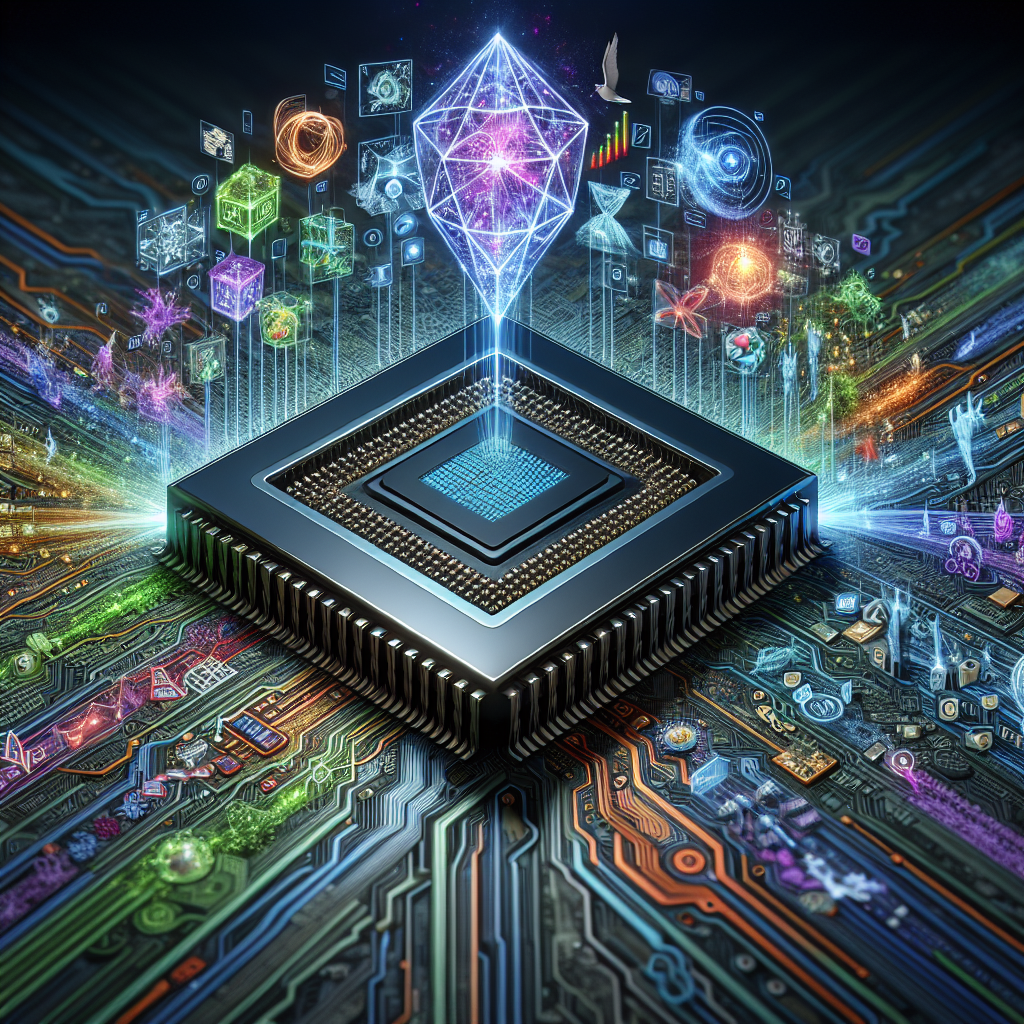
The Impact of NVIDIA’s Graphics Processing Power on Augmented Reality
Augmented reality (AR) has become increasingly popular in recent years, thanks in part to the powerful graphics processing units (GPUs) developed by NVIDIA. These GPUs have revolutionized the way AR applications are developed and experienced, opening up new possibilities for immersive and interactive experiences.NVIDIA’s GPUs are known for their high-performance capabilities, making them ideal for processing the complex graphics and rendering required for AR applications. These GPUs are able to handle the large amounts of data and calculations needed to create realistic and seamless AR environments, such as overlaying digital information onto the real world in real-time.
One of the key benefits of NVIDIA’s GPUs in AR is their ability to provide smooth and responsive visuals, even when rendering high-resolution graphics and complex animations. This is crucial for creating an immersive AR experience that feels natural and engaging for users. The high level of detail and realism that NVIDIA GPUs can achieve also helps to enhance the overall quality of AR applications, making them more visually appealing and realistic.
Another important factor is the efficiency of NVIDIA’s GPUs, which allows AR applications to run smoothly and efficiently on a variety of devices, including smartphones, tablets, and AR headsets. This means that users can enjoy AR experiences without experiencing lag or delays, regardless of the device they are using. This level of performance and compatibility is essential for the widespread adoption of AR technology, as it allows developers to create applications that can reach a larger audience.
In addition to their performance and efficiency, NVIDIA’s GPUs also offer advanced features that enhance the functionality and capabilities of AR applications. For example, NVIDIA’s GPUs support advanced rendering techniques, such as ray tracing and global illumination, which can significantly improve the realism and visual quality of AR environments. These features help to create more immersive and lifelike AR experiences, making them more engaging and captivating for users.
Overall, the impact of NVIDIA’s graphics processing power on augmented reality cannot be overstated. Their high-performance GPUs have transformed the way AR applications are developed and experienced, pushing the boundaries of what is possible in terms of realism, interactivity, and immersion. With NVIDIA’s continued innovation and advancements in GPU technology, the future of AR looks brighter than ever, promising even more exciting and groundbreaking experiences for users.
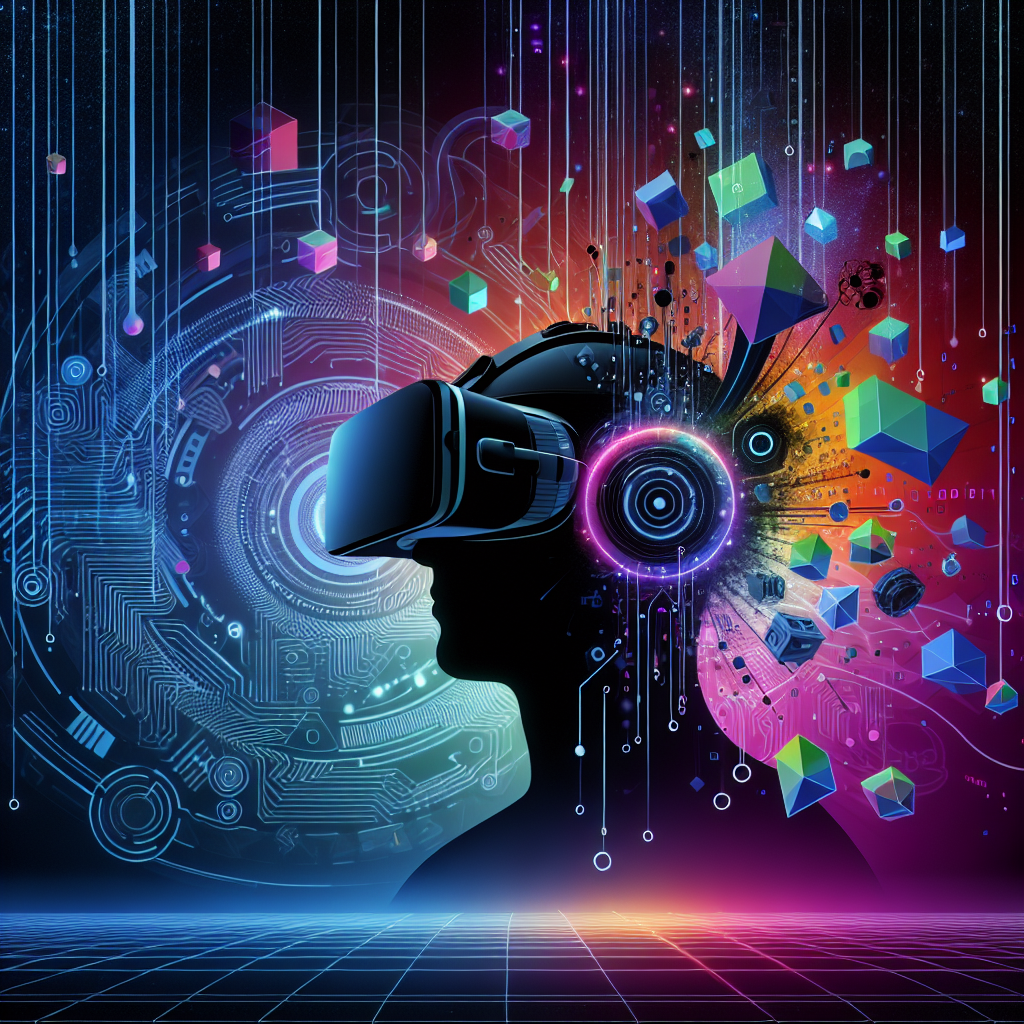
How NVIDIA is Revolutionizing VR Gaming with Cutting-Edge Graphics Technology
Virtual reality (VR) gaming has taken the gaming world by storm in recent years, providing players with immersive and realistic gaming experiences like never before. And leading the charge in revolutionizing VR gaming is NVIDIA, with its cutting-edge graphics technology.NVIDIA has long been known for its powerful graphics processing units (GPUs), which have been at the forefront of delivering breathtaking visuals in PC gaming. With the rise of VR gaming, NVIDIA has continued to push the boundaries of graphics technology to provide gamers with the most immersive and realistic experiences possible.
One of NVIDIA’s key contributions to VR gaming has been its development of technologies like VRWorks, which is a suite of APIs, libraries, and tools that enable developers to create more realistic and immersive VR experiences. VRWorks includes features like Multi-Res Shading, which dynamically adjusts the resolution of different parts of the screen to optimize performance, and Lens Matched Shading, which improves rendering efficiency by aligning the shading rate with the lens distortion of VR headsets.
NVIDIA’s latest GPUs, like the GeForce RTX series, have also introduced revolutionary features like real-time ray tracing and AI-enhanced graphics, which bring even more realism and immersion to VR gaming. Real-time ray tracing allows for more accurate lighting, reflections, and shadows, while AI-enhanced graphics can improve image quality and performance by using machine learning algorithms to predict and fill in missing details in rendered images.
In addition to its hardware and software innovations, NVIDIA has also partnered with leading VR headset manufacturers like Oculus and HTC to ensure that its technology is optimized for their devices. This collaboration has resulted in smoother and more immersive VR experiences for gamers, with NVIDIA GPUs providing the performance needed to drive high-resolution displays and complex VR environments.
Overall, NVIDIA’s commitment to pushing the boundaries of graphics technology and its dedication to providing gamers with the best possible VR experiences have made it a key player in revolutionizing VR gaming. With cutting-edge technologies like VRWorks and real-time ray tracing, NVIDIA continues to set the bar for immersive and realistic VR gaming experiences.
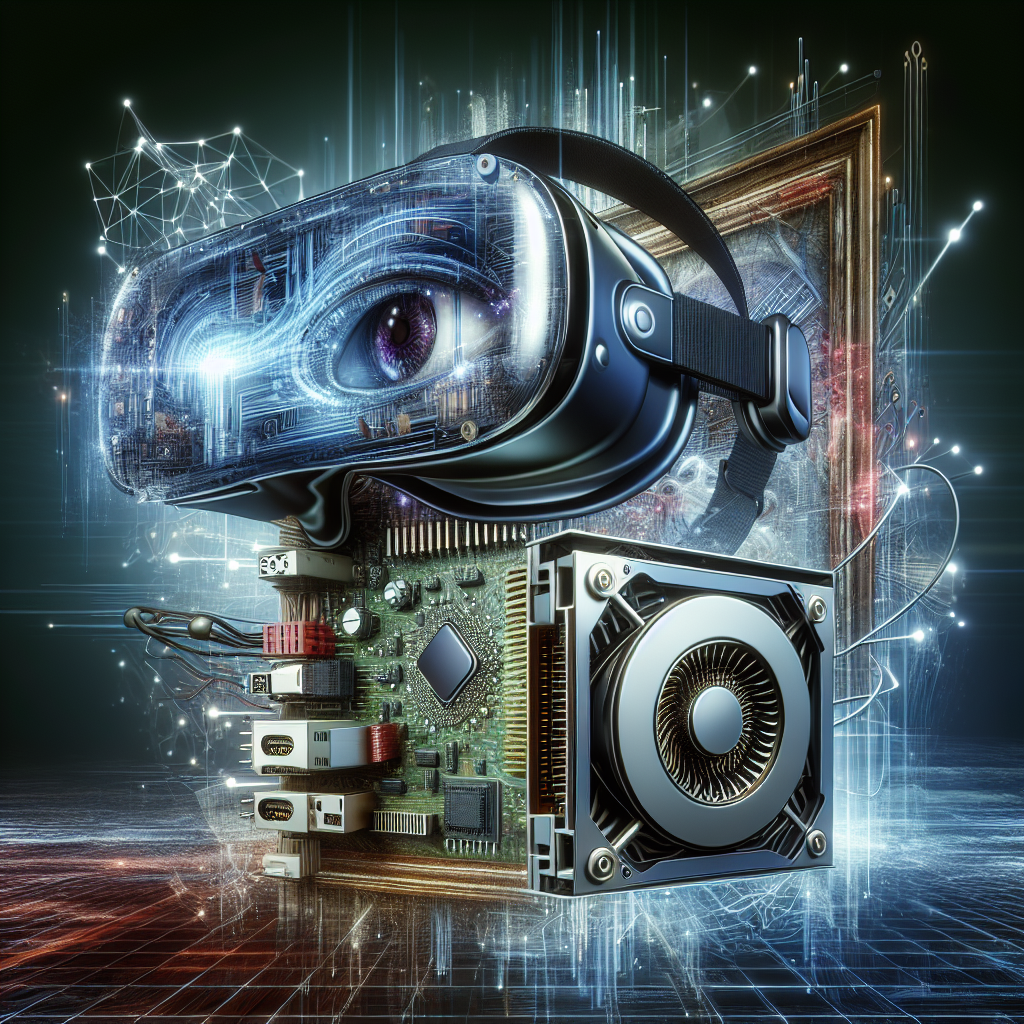
How NVIDIA is Revolutionizing Virtual Reality Technology
Virtual reality technology has taken huge strides in recent years, and NVIDIA is at the forefront of this revolution. The company has been making significant contributions to the development of virtual reality technology, making it more immersive, realistic, and accessible to a wider audience.One of the key ways in which NVIDIA is revolutionizing virtual reality technology is through its powerful graphics processing units (GPUs). These GPUs are capable of rendering complex, lifelike images and environments in real-time, creating a more immersive and realistic virtual reality experience. With NVIDIA’s GPUs, virtual reality content creators can push the boundaries of what is possible, creating stunning and captivating virtual worlds that blur the line between reality and fiction.
In addition to its powerful hardware, NVIDIA is also developing software solutions that are helping to improve the virtual reality experience. One of these solutions is NVIDIA VRWorks, a suite of APIs, libraries, and tools that enable developers to create more immersive and realistic virtual reality experiences. VRWorks includes features such as multi-res shading, which improves performance and image quality in virtual reality applications, and VR SLI, which allows multiple GPUs to work together to render virtual reality content more efficiently.
NVIDIA is also leading the way in the development of virtual reality technologies that go beyond just gaming and entertainment. The company is working on applications for virtual reality in fields such as healthcare, education, and training, where the technology can be used to simulate real-world scenarios and provide a more interactive and engaging learning experience.
Overall, NVIDIA’s contributions to virtual reality technology are helping to push the boundaries of what is possible in the world of virtual reality. With its powerful hardware, innovative software solutions, and commitment to pushing the boundaries of virtual reality technology, NVIDIA is helping to create a more immersive, realistic, and accessible virtual reality experience for users around the world.
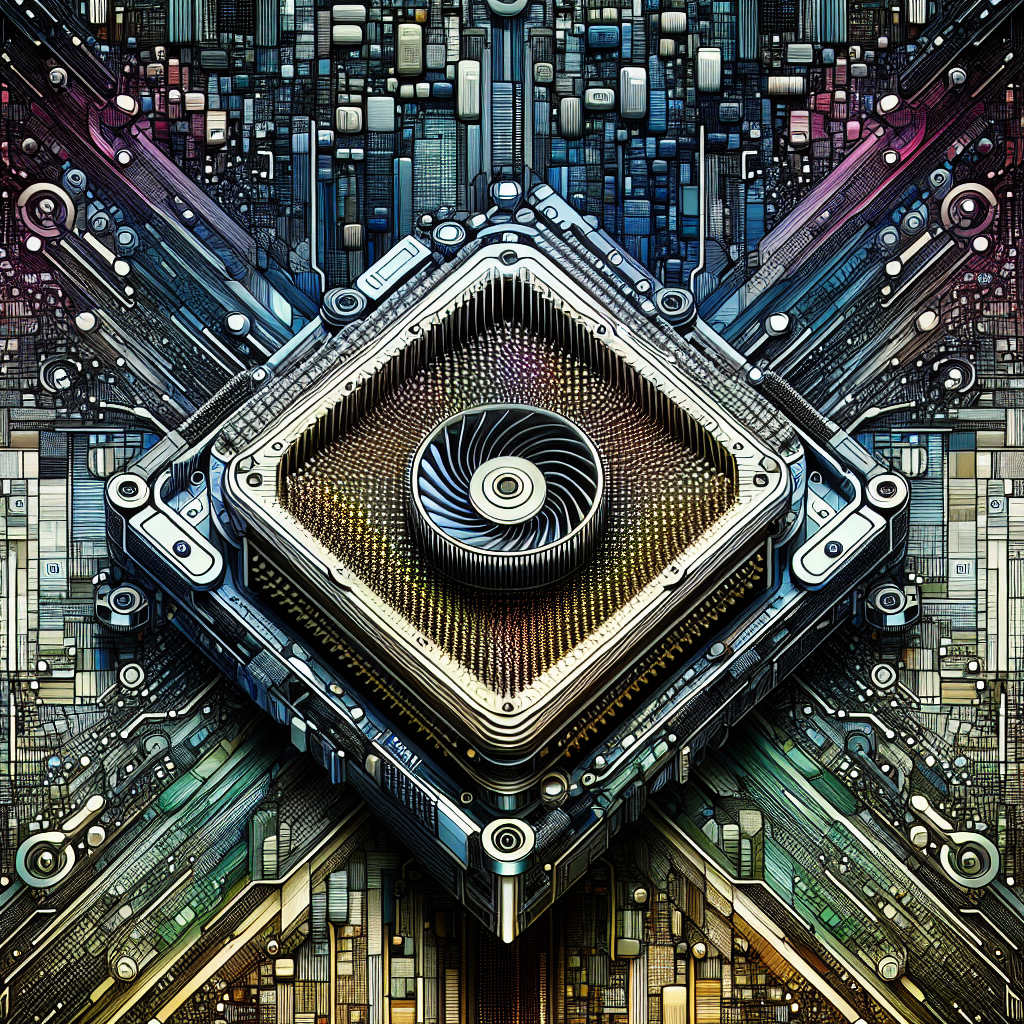
The Ultimate Guide to NVIDIA Quadro: Features, Benefits, and Applications
NVIDIA Quadro is a powerful graphics processing unit (GPU) that is specifically designed for professional users who require high-performance graphics for their work. Whether you are a graphic designer, architect, engineer, or any other professional who relies on high-quality visuals, NVIDIA Quadro is the ideal solution for your needs. In this ultimate guide, we will explore the features, benefits, and applications of NVIDIA Quadro to help you understand why it is the best choice for professional users.Features of NVIDIA Quadro
NVIDIA Quadro GPUs are packed with features that make them stand out from consumer-grade graphics cards. Some of the key features of NVIDIA Quadro include:
1. High Performance: NVIDIA Quadro GPUs are designed for professional applications that require high-performance graphics. With powerful processing capabilities, NVIDIA Quadro can handle complex visual tasks with ease.
2. ECC Memory: Error-correcting code (ECC) memory is a feature that ensures data integrity by detecting and correcting errors in memory. This is particularly important for professional users who need accurate and reliable results in their work.
3. Quadro Sync: Quadro Sync is a feature that allows multiple GPUs to work together seamlessly, synchronizing their display outputs for a smooth and consistent visual experience.
4. NVIDIA CUDA Cores: NVIDIA Quadro GPUs are equipped with CUDA cores, which are parallel processing units that enable faster data processing and rendering. This allows professionals to work more efficiently and complete tasks quickly.
Benefits of NVIDIA Quadro
There are several benefits to using NVIDIA Quadro GPUs for professional applications. Some of the key benefits include:
1. High Quality Visuals: NVIDIA Quadro GPUs deliver stunning visuals with exceptional clarity and detail. Whether you are working on 3D modeling, animation, or virtual reality applications, NVIDIA Quadro ensures that your visuals look their best.
2. Enhanced Productivity: With its high performance capabilities, NVIDIA Quadro allows professionals to work faster and more efficiently. Tasks that would take hours to complete with a consumer-grade GPU can be done in a fraction of the time with NVIDIA Quadro.
3. Reliable Performance: NVIDIA Quadro GPUs are built to last, with robust construction and high-quality components that ensure reliable performance over the long term. This means that professionals can rely on NVIDIA Quadro for their most demanding tasks without worrying about performance issues.
Applications of NVIDIA Quadro
NVIDIA Quadro GPUs are used in a wide range of professional applications across various industries. Some of the common applications of NVIDIA Quadro include:
1. Computer-Aided Design (CAD): NVIDIA Quadro is widely used in CAD applications for designing and modeling complex 3D objects. With its high-performance capabilities, NVIDIA Quadro can handle intricate designs with ease.
2. Animation and Visual Effects: NVIDIA Quadro GPUs are essential for creating stunning visual effects and animations in films, video games, and other media projects. The high-quality visuals and fast rendering capabilities of NVIDIA Quadro make it the go-to choice for professionals in the animation and visual effects industry.
3. Medical Imaging: In the field of medical imaging, NVIDIA Quadro GPUs are used to process and visualize complex medical images with high precision. From MRI scans to 3D imaging, NVIDIA Quadro ensures that medical professionals have accurate and detailed images for diagnosis and treatment.
In conclusion, NVIDIA Quadro is the ultimate choice for professional users who require high-performance graphics for their work. With its powerful features, benefits, and applications, NVIDIA Quadro delivers exceptional visual quality, enhanced productivity, and reliable performance for a wide range of professional tasks. Whether you are a graphic designer, architect, engineer, or any other professional who relies on high-quality visuals, NVIDIA Quadro is the ideal solution for your needs.
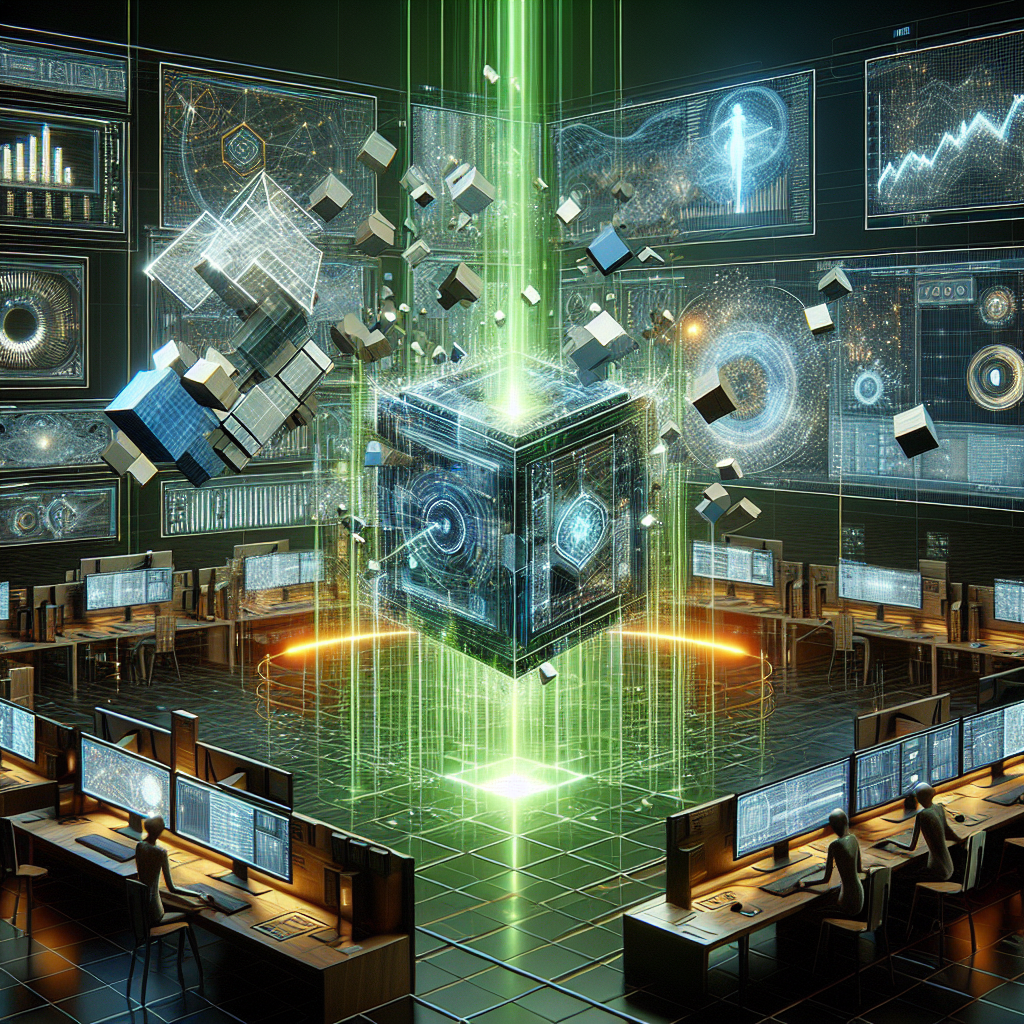
How NVIDIA is Revolutionizing Data Visualization
NVIDIA is known for its cutting-edge technology in the world of graphics processing units (GPUs), but the company is also making waves in the field of data visualization. With the increasing amounts of data being generated by businesses and organizations, the need for powerful tools to analyze and visualize this data has never been greater. NVIDIA is at the forefront of this revolution, providing innovative solutions that are changing the way we interact with data.One of the key ways in which NVIDIA is revolutionizing data visualization is through its GPU technology. GPUs are highly parallel processors that are capable of handling large amounts of data simultaneously, making them ideal for tasks like data visualization. NVIDIA’s GPUs are some of the most powerful on the market, enabling users to create stunning visualizations that were previously only possible with specialized hardware.
In addition to its powerful hardware, NVIDIA also offers a range of software tools that make it easier than ever to visualize data. One of the most popular tools is NVIDIA Omniverse, a platform that allows users to create immersive, collaborative 3D environments for visualizing data. With Omniverse, users can import data from a variety of sources and explore it in a virtual environment, making it easier to spot trends and patterns that may not be obvious in traditional 2D charts and graphs.
Another key aspect of NVIDIA’s data visualization revolution is its focus on real-time visualization. Traditional data visualization tools often require users to wait for long periods of time while their charts and graphs are generated, making it difficult to quickly explore and analyze data. NVIDIA’s GPUs are able to process data at lightning speeds, allowing users to interact with their visualizations in real-time. This means that users can make changes to their data on the fly, instantly seeing the impact of their decisions on the visualization.
Overall, NVIDIA is revolutionizing data visualization by providing powerful hardware and software tools that make it easier than ever to explore and analyze data. Whether you’re a data scientist looking to uncover hidden insights or a business executive looking to make data-driven decisions, NVIDIA’s technology is helping to drive the future of data visualization. With its focus on GPU technology, real-time visualization, and immersive environments, NVIDIA is changing the way we interact with data and unlocking new possibilities for businesses and organizations around the world.
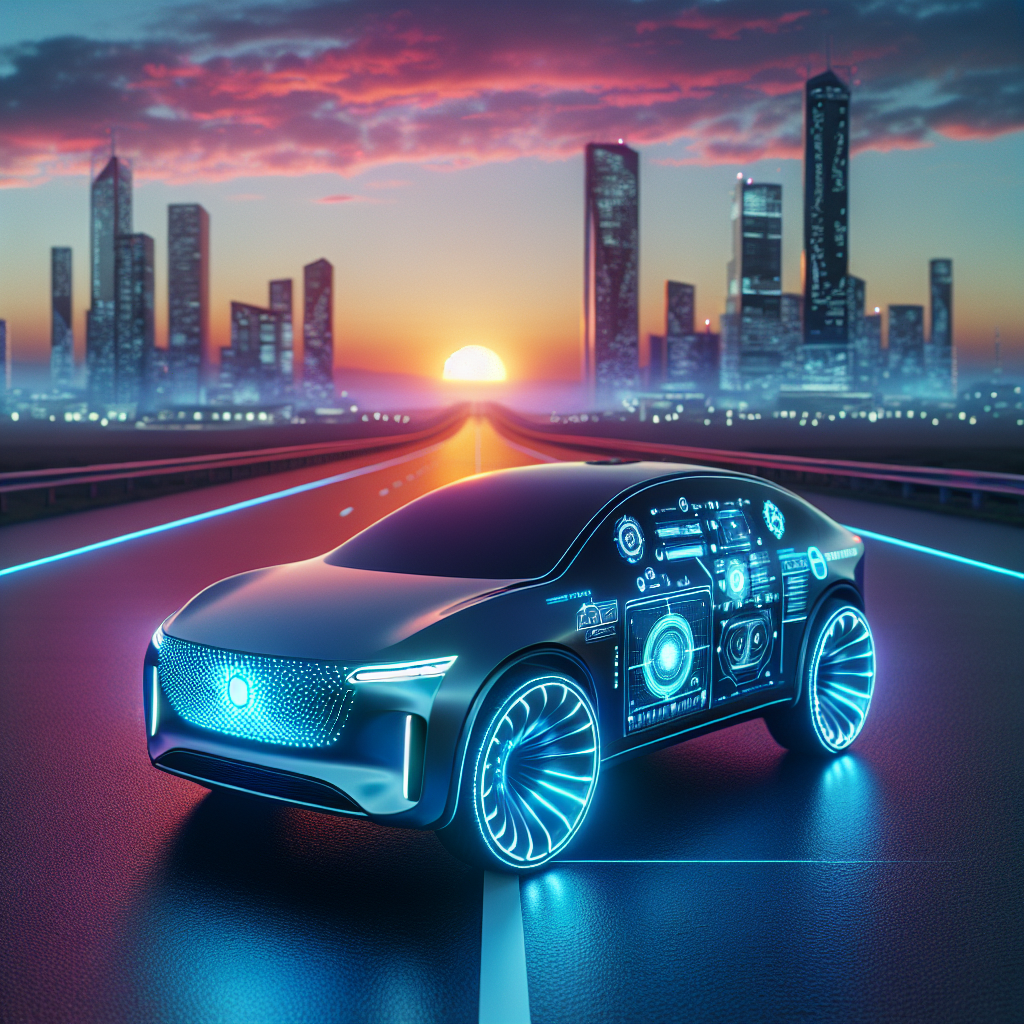
How NVIDIA DRIVE is Revolutionizing the Future of Autonomous Driving
NVIDIA DRIVE is shaping the future of autonomous driving by revolutionizing the way vehicles perceive and navigate the world around them. This cutting-edge technology is paving the way for safer, more efficient transportation systems that will ultimately transform the way we live and work.One of the key components of NVIDIA DRIVE is its advanced AI computing platform, which enables vehicles to process vast amounts of data in real-time and make split-second decisions to navigate complex environments. This platform is powered by NVIDIA’s industry-leading GPUs, which provide the processing power needed to handle the enormous amounts of data generated by sensors such as cameras, lidar, and radar.
Another key feature of NVIDIA DRIVE is its deep learning capabilities, which enable vehicles to continuously improve their driving skills through experience. By analyzing data from millions of miles driven, vehicles can learn to anticipate and react to different driving scenarios, ultimately making them safer and more reliable.
NVIDIA DRIVE is also leading the way in developing high-definition mapping solutions, which are essential for autonomous vehicles to accurately navigate their surroundings. These maps provide vehicles with detailed information about road conditions, traffic patterns, and potential hazards, allowing them to make informed decisions about how to navigate safely.
In addition to its technological advancements, NVIDIA DRIVE is also working to create partnerships with automakers, software developers, and other industry stakeholders to accelerate the adoption of autonomous driving technology. By collaborating with these key players, NVIDIA is helping to create a more cohesive and efficient ecosystem for the development and deployment of autonomous vehicles.
Overall, NVIDIA DRIVE is revolutionizing the future of autonomous driving by pushing the boundaries of what is possible with AI and deep learning technology. As this technology continues to evolve and improve, we can expect to see a world where autonomous vehicles are not only safer and more efficient but also more accessible and integrated into our daily lives. With NVIDIA DRIVE leading the way, the future of autonomous driving looks brighter than ever.
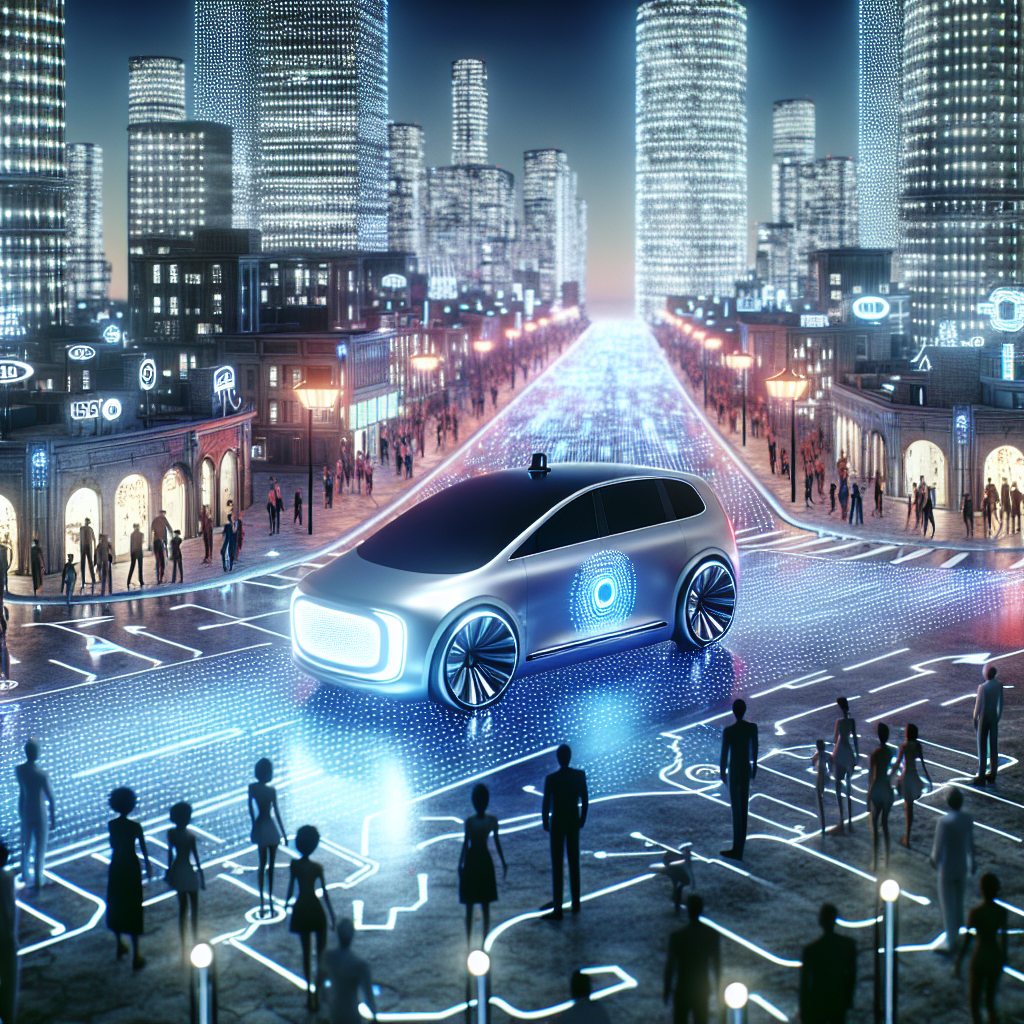
How NVIDIA is Revolutionizing the Automotive Industry with Autonomous Vehicles
NVIDIA, a leading technology company known for its graphics processing units (GPUs), is making waves in the automotive industry with its cutting-edge autonomous vehicle technology. By leveraging its expertise in artificial intelligence and deep learning, NVIDIA is revolutionizing the way vehicles are designed, controlled, and operated.Autonomous vehicles, also known as self-driving cars, have the potential to radically transform the way we think about transportation. By eliminating the need for human drivers, autonomous vehicles promise safer roads, reduced traffic congestion, and increased mobility for individuals who may be unable to drive themselves.
NVIDIA’s involvement in the autonomous vehicle space began with the development of its Drive PX platform, a powerful computer system designed specifically for autonomous driving applications. The Drive PX platform combines powerful GPUs with advanced machine learning algorithms to enable vehicles to process vast amounts of data in real-time and make split-second decisions on the road.
One of the key components of NVIDIA’s autonomous driving technology is its deep learning software, which allows vehicles to learn from their surroundings and adapt to changing road conditions. By continuously analyzing data from sensors such as cameras, lidar, and radar, NVIDIA’s software can detect objects, predict their movements, and plan a safe path forward.
In addition to its hardware and software solutions, NVIDIA has also formed partnerships with leading automakers and technology companies to bring autonomous vehicles to market. Companies like BMW, Mercedes-Benz, and Audi have all embraced NVIDIA’s technology and are working to integrate it into their own vehicles.
One of the most exciting developments in the autonomous vehicle space is NVIDIA’s Drive AGX platform, which is designed to power fully autonomous vehicles. By combining multiple GPUs and AI processors, the Drive AGX platform can handle the complex computations required for autonomous driving, while also providing redundancy and fail-safe mechanisms to ensure the safety of passengers.
Overall, NVIDIA’s work in the autonomous vehicle space is paving the way for a future where self-driving cars are not only possible but also practical and safe. By leveraging its expertise in artificial intelligence and deep learning, NVIDIA is helping to shape the future of transportation and revolutionize the automotive industry as we know it.

How NVIDIA Cloud Computing is Shaping the Future of Technology
NVIDIA has long been a leader in the world of graphics processing units (GPUs), but in recent years, the company has been making big strides in the world of cloud computing as well. With its powerful GPUs and advanced technology, NVIDIA is helping shape the future of technology in a big way.One of the key ways that NVIDIA is shaping the future of technology is through its cloud computing services. By harnessing the power of the cloud, NVIDIA is able to provide businesses and individuals with access to high-performance computing resources without the need for expensive hardware or infrastructure.
One of the key advantages of NVIDIA’s cloud computing services is the ability to scale up or down as needed. This flexibility allows businesses to quickly adapt to changing demands and ensures that they always have access to the computing power they need, without having to invest in costly hardware upgrades.
Another key benefit of NVIDIA’s cloud computing services is the ability to leverage the company’s advanced GPU technology. NVIDIA’s GPUs are known for their exceptional processing power and efficiency, making them ideal for a wide range of applications, from artificial intelligence and machine learning to high-performance computing and gaming.
By harnessing the power of NVIDIA’s GPUs in the cloud, businesses can take advantage of the company’s cutting-edge technology without the need for expensive hardware investments. This enables businesses to innovate and develop new technologies faster and more efficiently than ever before.
In addition to its cloud computing services, NVIDIA is also shaping the future of technology through its work in areas such as autonomous vehicles, robotics, and virtual reality. By leveraging its expertise in GPU technology, NVIDIA is helping to drive innovation and push the boundaries of what is possible in these rapidly evolving fields.
Overall, NVIDIA’s cloud computing services are playing a key role in shaping the future of technology. By providing businesses and individuals with access to powerful computing resources, advanced GPU technology, and the flexibility to scale as needed, NVIDIA is helping to drive innovation and drive the next generation of technology forward.
